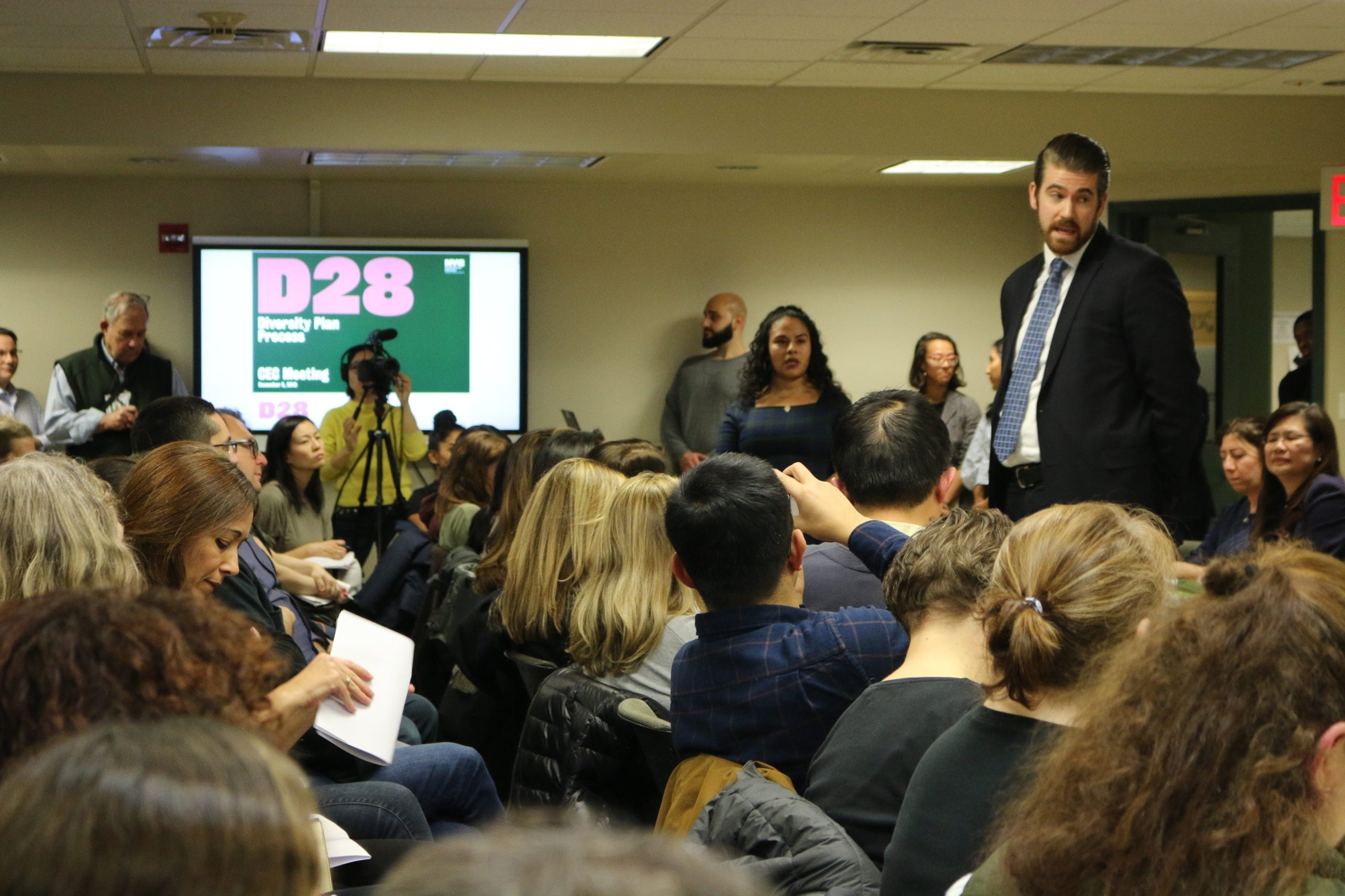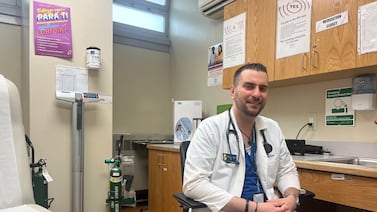The makeup of New York City’s local Community Education Councils will shift significantly in some corners of the city — with potentially long-lasting consequences for school diversity plans, according to election results released this week.
Though largely advisory, these councils wield power when it comes to changing or creating school zones, and they have been at the forefront of the city’s integration plans. These efforts recently helped spur the creation of an advocacy group called Parent Leaders for Accelerated Curriculum and Education, or PLACE, which has pushed to preserve many of the same admissions policies that others blame for exacerbating segregation. PLACE promoted certain candidates for the elections, and made inroads on a number of the councils.
“A lot of these parents were afraid to speak out because you’ll get called racist, this whole ‘cancel culture’ online,” said Lucas Liu, co-president of PLACE. “So these parents who were afraid to speak out, they spoke with their vote, and this is the result.”
The education councils, often referred to as CECs, have become a place where bitter school politics have played out. The fights have been ignited by demands to change the city’s competitive admissions systems and Mayor Bill de Blasio’s clumsy attempt to overhaul admissions to the city’s coveted specialized high schools, which enroll few Black and Latino students and are majority Asian. Lately, the councils have reflected polarized national debates around issues like teaching about racism, and reopening school buildings amid the pandemic.
Coupled with a change in voting this year, groups on all sides of these hot-button issues mobilized to push their agendas for the council elections. And PLACE — which has advocated to keep the current admissions test at the specialized high schools and whose members have described talk about white supremacy and race in schools as “nonsense” — made significant gains.
‘It’s not going to be like the previous term’
Liu was reelected to the council in Manhattan’s District 3, which spans the Upper West Side and Harlem. He will be joined on the nine-member council by at least three other members who are aligned with PLACE’s stances, such as calling to address stark racial disparities in the city’s competitive middle and high schools by expanding access to gifted programs in an effort to prepare more students to meet the entrance criteria for those schools.
“There was a big enough shift that it’s not going to be like the previous term,” Liu said. “I think PLACE did have an influence on the outcomes, but at the same time it wasn’t like PLACE went out and convinced people to take a position. It was already out there.”
In 2018, District 3 became the first in the city to win approval for a districtwide middle school integration plan. CEC member Kristen Berger, as head of the council’s middle school committee, was instrumental in making it a reality. She did not run for reelection partly because her child is entering high school, and high schools have a separate, citywide parent council.
Berger said she wasn’t surprised by the election outcomes. The middle school plan was contentious, and it came on the heels of a rezoning in the district, which shifted attendance boundaries around some sought-after elementary schools partly in an attempt to spur diversity.
“Politically, the pendulum always swings. So when there’s a policy change, the people who are activated and motivated are those affected by the policy — and usually those most upset about the policy,” she said.
Now she’s worried that progress will stall when it comes to integrating middle schools. The integration plan, she said, “was really thought of as just a starting point and that it could expand from there.” Intentionally modest from the outset, given intense push back from some parents, the goal of the plan was to look at data and learn from family experiences each year. Along the way, the council hoped to tweak the admissions standards to open up more schools to more students.
“So I would be very disappointed if it doesn’t get that opportunity because I think that would be so much better for the students and the schools in the district,” Berger said.
With the elections shifting the makeup of CECs, Berger said the mayoral election is crucial to advancing efforts like the one in District 3, since the next mayor and chancellor ultimately decide whether they will follow the advice of the councils.
Liu said electeds would be wise to heed the CECs. As gifted programs have increasingly become a target for significant reform, the new CEC in District 3 includes a parent from the Anderson School, one of the city’s most competitive gifted schools. Another is from P.S. 163, which is phasing out its gifted program.
“These elected officials and these candidates, they better pay attention. Parents are starting to push back,” he said. “I think that’s what these elections showed.”
‘There’s asymmetries in access’
But Robin Broshi, who was reelected to the council in District 2, which stretches from Lower Manhattan to the Upper East Side, questioned how representative the election results really are. PLACE candidates swept the election in the district, leaving Broshi as the sole council member who has opposed the group’s agenda.
When it came to voting this year, Broshi worried that many families may have not been able to easily navigate the online ballot. She also pointed to the advantage that some larger schools may have had in getting candidates elected.
“There’s asymmetries in access,” she said.
The voting process this year changed significantly, expanding to all parents with children in city-run public schools — rather than just a handful of Parent Teacher Association leaders, as was the case previously.
The aim of the changes was to make the elections more democratic by opening the ballot box to more parents. Yet it came in the midst of a crushing pandemic, when many families’ attention may have been elsewhere. The CECs are relatively obscure bodies, and parents had to sift through an overwhelming roster of more than 100 candidates in some districts. Most voting happened online, which could disadvantage those with limited access to technology or the internet. Some of the city’s districts with the highest shares of low-income students — areas that also have been hard-hit by COVID — cast significantly fewer ballots.
In District 3, Liu was the top vote-getter with more than 700 votes. In East New York’s District 19, which includes roughly the same number of students but has more than double the poverty rate, the top vote-getter garnered 39 votes. The education department did not respond to repeated requests for voter data broken down by the school that the parent’s child attends.
“Turnout in general was so low, but where was turnout so high?” Broshi asked. “It’s easy to rally a group of people around their anxiety that they’re losing access to a benefit for their children, or an advantage for their children.”
Broshi acknowledged it’s important to listen to formal institutions like the CECs, or organized bodies like PTAs, but said she hopes the education department will also consider “who doesn’t end up at the table.” She was concerned that could include parents who feel targeted by the harsh rhetoric that has become commonplace at CEC meetings, which have become bruising and full of personal attacks from the public and fellow council members.
Broshi suspects that parents who sought appointments to the council from the borough president, who can install two members, will withdraw themselves from consideration given the shift on the CEC in District 2.
“It’s going to remove people from the conversation, I think, from the CEC level because of the toxic, vitriolic rhetoric,” she said.






